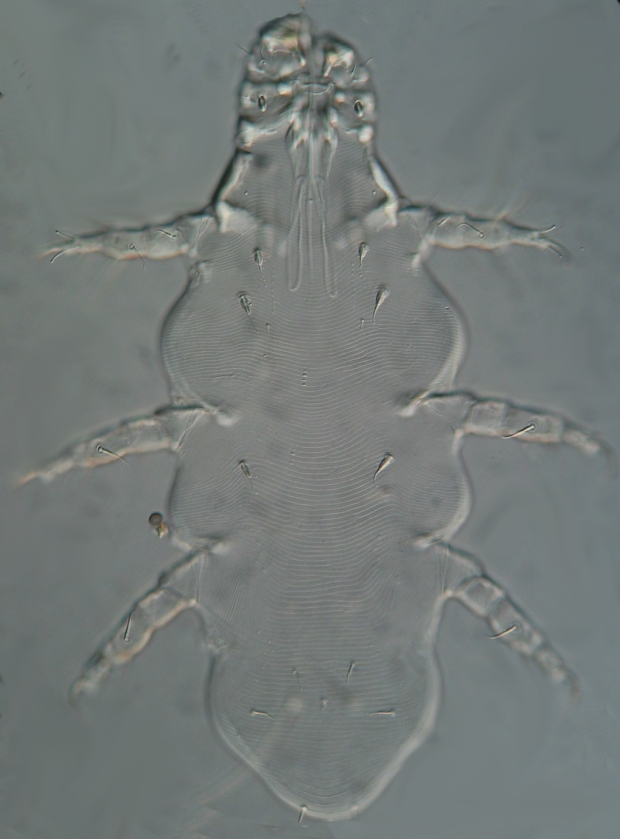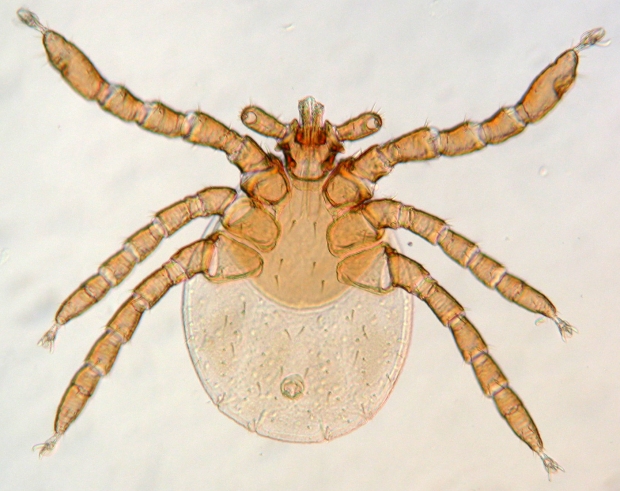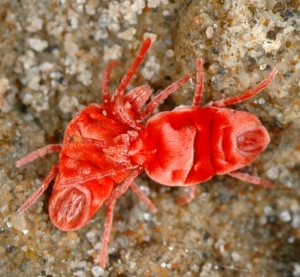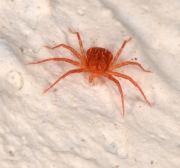My friend Allan Lindoe, fossil preparator extraordinaire, lives on an acreage near Athabasca and makes the journey south to Edmonton about once a week to carefully remove rocky matrix from around the skeletons of long-dead fishes, mosasaurs, and dinosaurs. Two cats share his home and frequently bring him presents of wild game. A few weeks ago I washed a mixed bag (literally) of a dozen shrews he had accumulated over the summer and fall of 2015. Chewed-on shrews are not easy to identify unless you know a lot about insectivore teeth, but based on tail length and known distributions of shrew species in Alberta, they were one or more of the masked shrew (Sorex cinereus), Arctic shrew (S. arcticus), pygmy shrew (S. hoyi) and/or dusky shrew (S. monticolus)*. Some of the shrews were rather decomposed, so I wasn’t expecting much from the washings, but I was pleasantly surprised: 6 species of mites! Members of both major lineages were present. From the Acariformes were Prostigmata (Myobiidae, Pygmephoridae and Trombiculidae) and Sarcoptiformes (Glycyphagidae). From the Parasitiformes there were larval hard ticks (Ixodida: Ixodidae) and what look like Melicharidae (Mesostigmata). Myobiids, trombiculids, and ixodids are parasitic, and the others are all likely just phoretic. Who knew the zoo on shrews? Now you do.
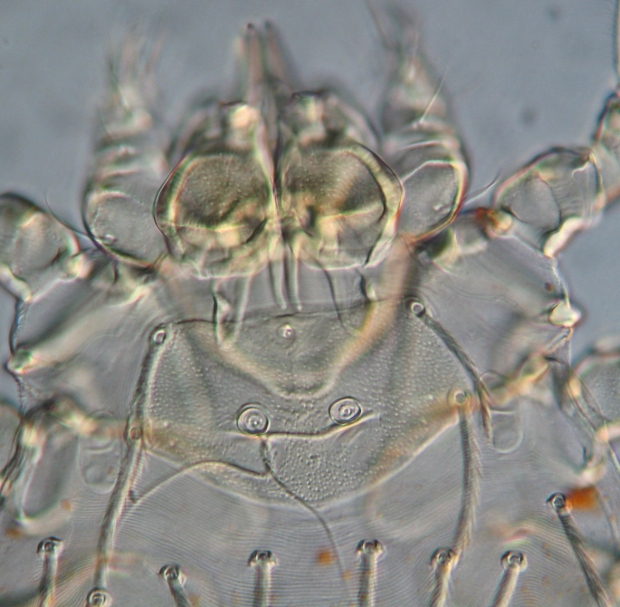
Prodorsal shield of a shrew chigger, showing the posterior pair of trichobothria and single anterior median seta (just the base can be seen here) indicative of the family Trombiculidae, as opposed to members of the Leeuwenhoekiidae, which have two anterior median setae.
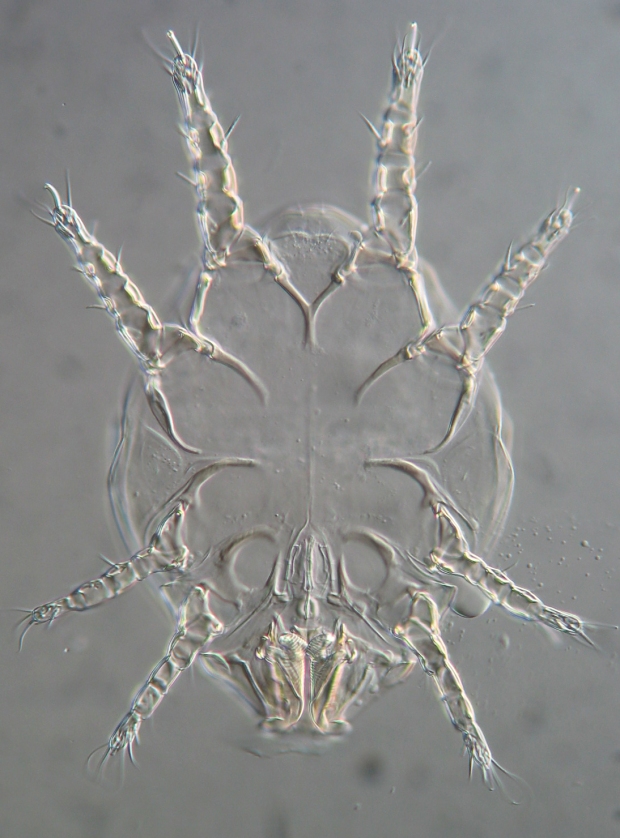
An Oryctoxenus sp. deutonymph (Glycyphagidae). Anterior is pointing up, and yes, it doesn’t have mouthparts.

The ‘procto’ part of Proctolaelaps refers to the large anal opening, or so the etymological legend goes.
*Smith, H.C. 1993. Alberta Mammals: an Atlas and Guide. The Provincial Museum of Alberta, Edmonton, Alberta.


